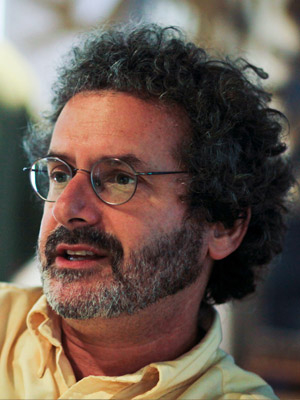
On October 14 at 7 p.m. at the Lied Center, Neil Gershenfeld, the director of MIT's Center for Bits and Atoms, will present “How To Make (almost) Anything”. There is also a pre talk at 6:30 in the Steinhart Room.
Neil Gershenfeld is the director of MIT's Center for Bits and Atoms. His unique laboratory breaks down boundaries between the digital and physical worlds, from creating molecular quantum computers to virtuosic musical instruments. Technology from his lab has been seen and used in settings including New York's Museum of Modern Art and rural Indian villages, the White House and the World Economic Forum, inner-city community centers and automobile safety systems, Las Vegas shows and Sami herds. He is the author of numerous technical publications, patents, and books including “Fab,” “When Things Start To Think,” “The Nature of Mathematical Modeling,” and “The Physics of Information Technology.” He has been featured in The New York Times, The Economist, NPR, CNN, and PBS. He is a fellow of the American Physical Society, has been named one of Scientific American's 50 Leaders in Science and Technology, as one of 40 Modern-Day Leonardos by the Museum of Science and Industry, one of Popular Mechanic's 25 Makers, has been selected as a CNN/Time/Fortune Principal Voice, and by Prospect/Foreign Policy as one of the top 100 public intellectuals. Gershenfeld has a bachelor’s in physics from Swarthmore College, a Ph.D. in applied physics from Cornell University, and honorary doctorates from Swarthmore College and Strathclyde University. He was a junior fellow of the Harvard University Society of Fellows, and a member of the research staff at Bell Labs.
Lecture Summary:
Analog telephone calls degraded with distance; digitizing communications led to the Internet. Analog computations degraded with time; digitizing computing led to the PC. Today's most advanced manufacturing remains analog: the designs are digital, but the processes are not. I will introduce emerging research on digitizing fabrication, and explore the implications of anyone being able to make (almost) anything.
More details at: http://go.unl.edu/iw33